Preparing the Autumn Garden

Remember the love you had for your patch through spring and summer? When the first sign of a tomato made you blush, and then finally it blushed its rosy cheeks in return. We are here to help you fall in love with autumn gardening. We don’t have cupid’s arrow or a rose ceremony… sorry Osher. We do however have all the tips and tricks to get your patch ready for the cooler months. Consider this your blind date with autumn, and us your mutual friend, giving you all the insight to make the best first impression. Blind date? Ha! It’s like you’ve already met.
With the new season comes the promise of more frequent rains (we see you forgetful waterers) and less intensive garden management, so if your eagerness for the veggie patch took a couple of steps south over the preceding months, rest assure the future is looking brighter and we’ll be making small talk about the cold and wet weather in no time, “nice day for it…”
The who’s who of autumn planting is extensive and varied; such is the attitude of Australia’s climate, the door policy is relaxed and many can get in to our patches and most times of the year. It’s the way it should be. Leafy greens, root vegetables, the alliums, all the brassicas – broccoli, cabbage, cauliflower – and legumes of broad beans and peas are chomping at the bit to become part of the autumn plant-out party. Maybe a door list isn’t such a bad idea? In alphabetical order so we don’t let on who our favourites are, here who’s wanting to get in…
Beetroot, Bok Choy, Broad Beans, Broccoli, Brussels Sprouts, Cabbage, Carrot, Cauliflower, Celery, Coriander, Fennel, Garlic, Herbs (all perennials, i.e. not basil!), Kale, Kohl Rabi, Leek, Lettuce (all varieties), Mustard Greens, Onions, Pak Choi, Radish, Rocket, Shallots, Silverbeet/Swiss Chard, Spinach, Spring Onions, Strawberry, Swedes, Turnip.

Harvesting
Perhaps you have let your patch fall to the wayside and it’s now resembling a plant graveyard - full of overgrown, burnt tomato plants or powdery mildewed zucchinis? Maybe they are still producing fruit, throwing signals to entice you back out into the patch. Nearly every bone in your body is craving to rip them out, casting them to the compost to start with a clean slate. It pays to remember how long you waited for the first fruits, and not to take anything for granted. Back in November or December, you’d give your left arm for one ripen Tommy Toe tomato, and even though the plants look like death now, they still may be producing their treasures.
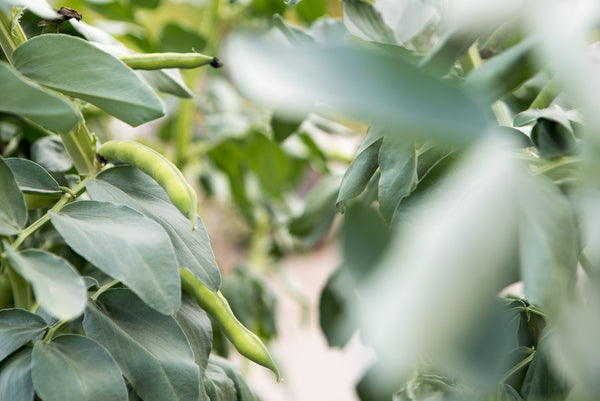
Crop Rotation
Where you have planted nitrogen-hungry crops such as tomatoes and corn you should replenish by growing peas and/or broad beans through the cooler months. Both will need some support as they grow up and these frameworks are best installed prior to planting when there is less chance of a clumsy, massacring of the crops. Spaces that have grown beans will be pumped full of nitrogen, ready for any of the brassicas – broccoli, cauliflower, cabbage etc – to deplete.
Soil preparation
Even when practicing crop rotation, your soil will need a morale boost, as well as a physical one. Where planting peas and broad beans, bring in a fresh lick of compost (* lick = an inch or so, dug in through the soil). Where opting for salads, roots, and alliums, add some blood and bone to the compost, giving the soil some much needed phosphorous for the alliums and roots. For the hungry brassica feeders, you really need the full house; added some nitrogen high fertiliser to the mix too.
Soil temperature
At this time of the year you will hear people talking about soil temperature like they’re baking bread. To put some context to it, it is the soil temperature rather than air temperature that dictates the growth of our food and autumn/winter varieties need a soil temperature in the range of 18 degrees to be ready for planting. Despite air temperature being the main determinant and something we can’t alter, there are ways you can cool your soil for planting. Removing mulch from the patch as the weather cools down will allow the soil to cool more quickly. You can then lay a hessian cloth over the space that will further accelerate the process. Remember not to completely ignore the soil, it still will need to be watered to prevent it from becoming hydrophobic. Rather than using a finger to measure the temperature, perhaps use something more accurate such as a soil thermometer.
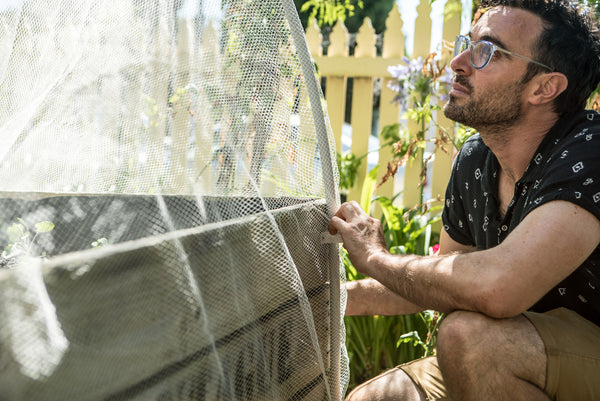
Netting
Keep any young brassica seedlings covered with fine netting to prevent the white cabbage moth from laying its larvae. It’s primetime for this pest, so a physical barrier is your first, and often the best form of defence. In the absence of netting you are really gambling on the outcomes because while you may spot a few harmless white butterflies fluttering around the patch, identifying the green, camouflaged caterpillars stripping your plants bare is a tougher proposition.
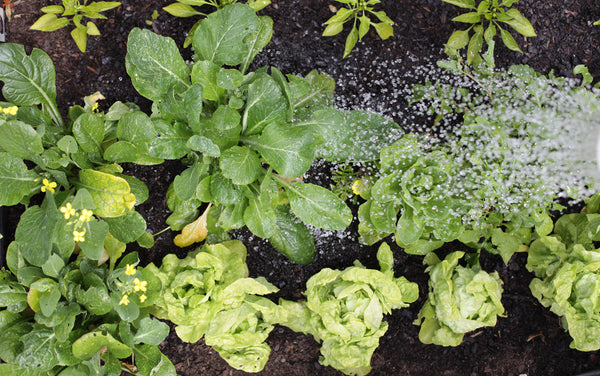
Water
If you have neglected your garden over summer, it’s time to run a simple test. Water your soil until it is literally flooded and then wait for it to soak in. Now scratch the surface soil aside; if you reveal dusty, dry earth, it may, in fact, be hydrophobic. Once it gets to this state it can be a long road back, so long in fact, that despite being able to slowly restore it back integrating fresh organic matter, or wetting agents and hydration liquids, we usually recommend starting afresh. At the very least, replace the top few inches of the most badly affected. Check out our full resource on hydrophobic soil here.
Mulching
This is more than just the extra-curricular activity it’s often perceived to be. In fact it's an absolute fundamental of veggie gardening and particularly important at this time of the year to prevent hydrophobic soil. Adding a layer of mulch largely prevents evaporation, but also adds a protective layer, stopping the harsh rays from baking it dry. Make sure to mulch to a useful depth of approximately 3cms and use a material that will feed the plants as it breaks down, such as pea straw, lucerne hay or sugar cane mulch. In the past, we’ve left patches unwatered for months at a time, but with a protective covering of mulch, the blanketing effect keeps the surface cool and soil useful. If removing mulch to allow the soil to cool, make sure to keep it hydrated or as advised, lay hessian cloth down and make sure to keep it moist.
Propagation
While it may be too early to plant things directly to the patch, there is no better time to start propagating autumn seeds in readiness. Growing in a mini-greenhouse or using some toilet roll planters, is the most efficient and effective way of getting a head start on the cool season crops. The greenhouse effect will help insulate the soil and retain moisture, and portability means you can keep it in a cool place that mimics the ideal growing conditions; that is, not baking out in the hot, summer-like sun!

Garlic
If you feel like a long-term relationship try planting organic garlic. Like other things in life, it will take about nine months to yield anything substantial. Unlike other things in life, however, those nine months won’t be followed by seven years of car seats. Garlic is certainly a slow burner, but it is also a set and forget type of crop with benefits beyond the produce. For one, having garlic in the patch is a brilliant natural pest repellent and is a particularly helpful companion to strawberries. Additionally, garlic will begin producing long green stalks, called scapes. Trimming these scapes is an interim harvest that adds a tasty x-factor to your cooking.
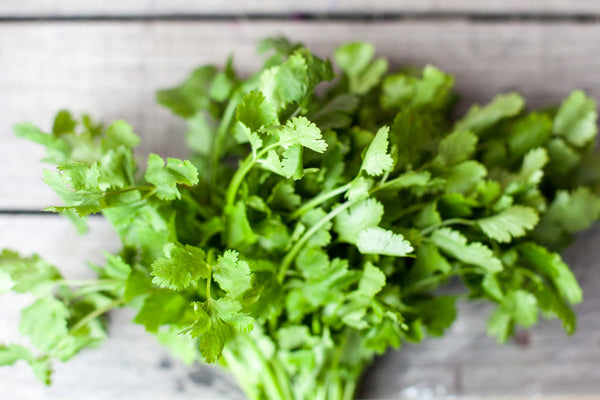
Herbs (and Coriander!)
Of course, autumn is still the perfect time for growing herbs, and basil aside any herb can be grown and thrive now. It is the ideal time to reconvene your battle with coriander and dill; two troublemakers that often misbehave in the heat. Even if you don’t have much space for an edible garden, pots and herbs are grand old friends and perfectly suited to each other. Choose a pot size that will allow your herbs to grow into the space. Kind of like buying your 12-year old football boots 3 sizes too big - get some value out of them!
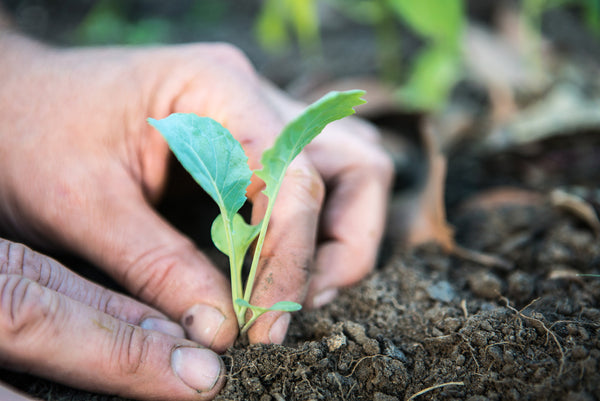
Planting
Once all the preparation tasks have been completed, and conditions approach autumn perfection (usually around early April), it will be time to plant. While mid to high 20’s with plentiful rays is ideal conditions for us as humans, a cooler temperature, and overcast skies are much more friendly for autumn plants. Make sure to time their entrance to the patch well, and once planted, keep them well-hydrated.
-
Posted in
seasonal
